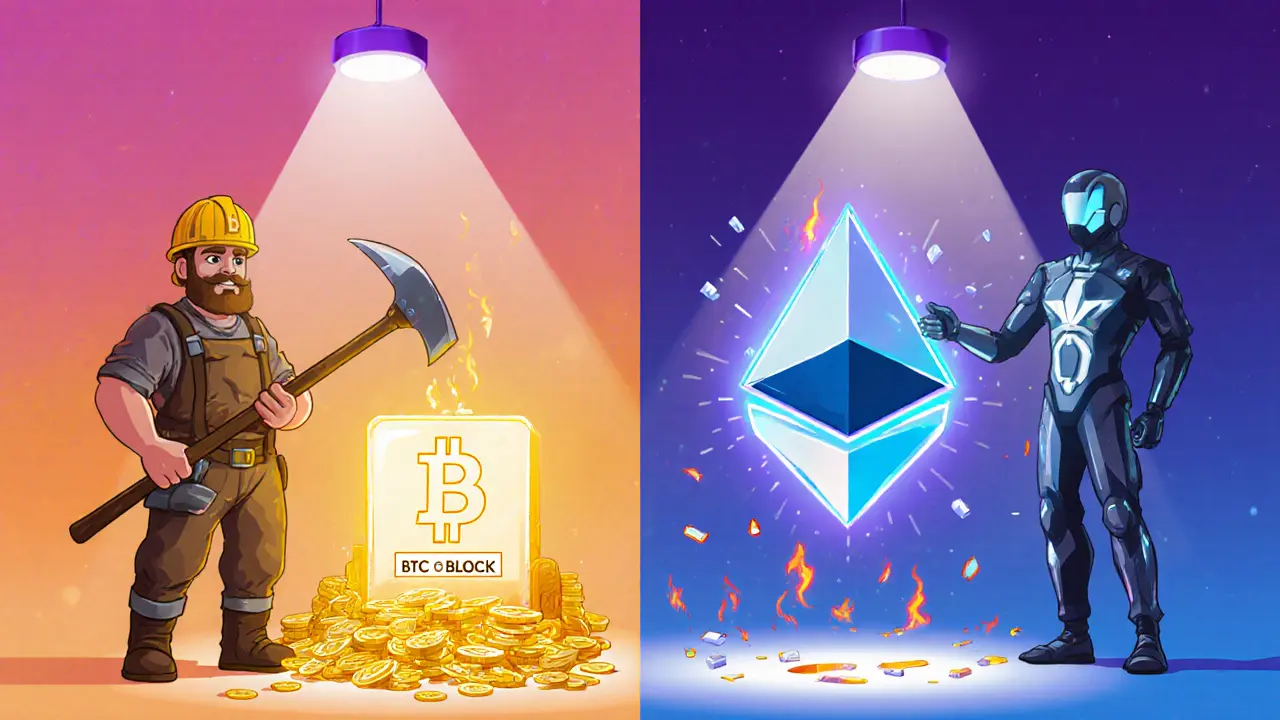Learn how block rewards and transaction fees power Bitcoin and Ethereum, why fees matter for security, and what the future holds for crypto network incentives.
Ethereum: The Core of Modern Crypto
When working with Ethereum, a decentralized platform that runs smart contracts and powers a huge range of decentralized applications. Also known as ETH, it enables developers to create trust‑less code that executes exactly as written.
One of the most powerful features of Ethereum is its support for smart contracts, self‑executing programs that run on the blockchain without intermediaries. These contracts make up the backbone of the DeFi, a financial ecosystem where lending, borrowing and trading happen without traditional banks sector. At the same time, the ERC‑20 token, a standard that defines how fungible assets behave on Ethereum has become the lingua franca for new projects, from stablecoins to governance tokens. Together these entities create a web of interactions: Ethereum encompasses smart contracts, smart contracts enable DeFi, and DeFi often relies on ERC‑20 tokens to represent value.
Why Ethereum Matters for Developers and Traders
Ethereum’s consensus moved from Proof‑of‑Work to Proof‑of‑Stake in 2022, reducing energy use by over 99 % and introducing a new set of economics. The network’s native currency, ETH, fuels all activity through gas fees—the cost of executing a contract or transferring a token. Gas rates vary with network congestion, forcing users to balance speed against cost. Recent upgrades like “sharding” and the rise of Layer 2 solutions (Optimism, Arbitrum) aim to boost throughput, lower fees, and keep the user experience smooth.
Beyond finance, Ethereum hosts the NFT boom, where unique digital items are minted as ERC‑721 or ERC‑1155 tokens. These standards build on the same smart‑contract foundation that powers DeFi, showing how one platform can serve art, gaming, identity and more. Security remains a hot topic; bugs in smart contracts can lead to huge losses, so formal verification and audits are becoming standard practice. Developers also benefit from a rich tooling ecosystem—Solidity for coding, Hardhat and Truffle for testing, and ethers.js or web3.js for interaction.
Whether you’re a beginner curious about how crypto works or an experienced trader looking for the next yield opportunity, this collection has you covered. You’ll find step‑by‑step guides on Ethereum’s inner workings, deep dives into DeFi strategies, practical tips for managing ERC‑20 tokens, and analysis of the latest Layer 2 roll‑ups. Explore the world of Ethereum through our curated articles and see how each piece fits into the broader blockchain puzzle.

